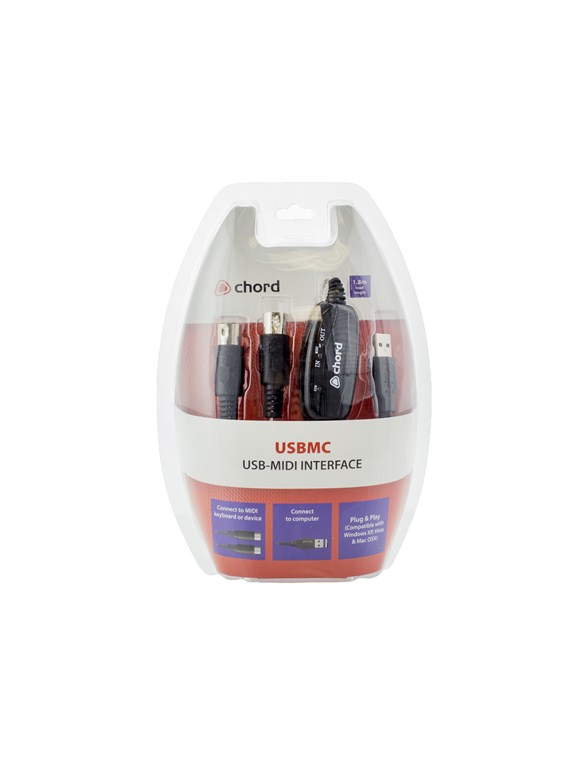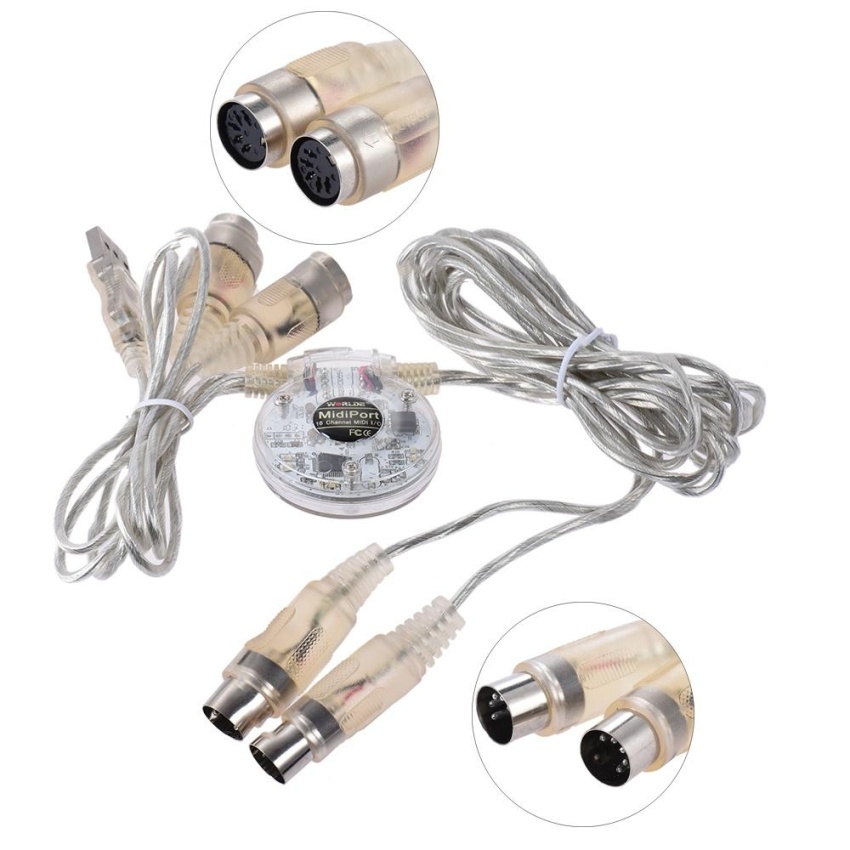Untitled Document Mac MIDI Studio Setup How to configure your MIDI studio on a MAC using a MIDI interface. By Ron Tongue Apple has done an excellent job in making Mac MIDI configurations quick and easy. Before you begin, you should make sure that your MIDI software is properly installed and all of your MIDI equipment is setup. Follow the steps below to begin. Step 1: Install your MIDI interface drivers. Before you can configure your operating system, you need to make sure that your Mac MIDI interface drivers are properly installed.
Tiny unit comes with USB and MIDI extension cables, features MIDI activity indicators, and works for Windows or Mac. Single MIDI in and out connectors make it.
Otherwise, your computer will not recognize the MIDI interface and won't know how to communicate with it. Refer to your MIDI interface user documentation for more detailed information on this step.
Step 2: Connect all of your MIDI components. First connect your MIDI interface to your computer. A USB cable is normally used for this. Then connect each MIDI instrument to your MIDI interface. Remember the 'IN' on your interface goes to the 'OUT' on your instrument and the 'OUT' on your interface goes to the 'IN' on your instrument. Once you've got it, go back and double check it.
This is the most common mistake when setting up a MIDI studio. Step 3: Turn the power on to all of your MIDI components.
In order for your computer to determine what hardware you have, it must be turned on. This includes the computer, MIDI interface, and all MIDI instruments and/or Mac MIDI devices. Step 4: Launch your 'Audio MIDI Setup' utility. The Audio MIDI Setup utility is where you will configure your computer to communicate with your MIDI equipment.
Here, you will identify each piece of equipment in your MIDI studio and 'show' the computer how everything is connected. To launch the Audio MIDI Setup:. When you open the 'Utilities' folder, double click on the 'Audio MIDI Setup' icon. Step 5: Click on the 'MIDI Devices' tab. At the top of the Audio MIDI Setup window there are two tabs. Click on the tab named 'MIDI Devices.'
Best Midi Interface For Mac
Step 6: Make sure your MIDI interface is recognized. If you configured your MIDI interface properly (refer to step 1), you should see an icon in the Audio MIDI Setup window. If you don't see your MIDI interface icon, first make sure the power is turned on and the USB cable is properly connected.
Second, click the 'Rescan MIDI' button (toolbar) at the top right of the Audio MIDI Setup window. Step 7 (Optional): Create a new configuration from the drop down menu. Locate the 'Configuration' drop down menu along the toolbar at the top of the window. Select 'New Configuration' from this menu.
Then give your configuration a name. When you are finished, click the 'OK' button. Step 8: Customize your MIDI interface information. Double-click the icon that represents your USB MIDI interface. A window should open where you can configure your MIDI interface. If it was not done automatically for you, first give your Mac MIDI interface a name.
Then choose the manufacturer and model from the two drop down menus. Note: Some MIDI interface manufacturers include advanced configuration software (such as the image above). When you first double-click on the USB MIDI interface icon it may open a more detailed configuration panel specific to your interface.

These are more advanced options that mostly likely will NOT need to be changed for your current use. For more detailed information, you may need to refer to the user documentation for your MIDI interface.
Close this window when you are done making changes. Step 9: Add your MIDI Instruments and Devices: A MIDI device in this case will be your MIDI keyboard. Other Mac MIDI devices include effects units, digital recording units, stage lighting units. To add a device:. Click the small red circular button in the far upper left corner of the device window (this will close the window). Step 10: Repeat step 8 for each of your MIDI devices. Step 11: Drag to connect all your 'INS' and 'OUTS.'
Along the bottom of your MIDI interface icon there should be two or more small arrowheads. These represent the 'inputs' and 'outputs' of your USB MIDI interface. Locate the far left arrowhead that points down. When you click and drag it with your mouse you should notice a black line, which will appear to be coming out of the MIDI interface.

This is supposed to represent an actual Mac MIDI cable. Click and drag to connect the down arrows together and the up arrows together. If you make a mistake, you can easily clear the cables and start over. To do this, click on the 'MIDI' menu at the very top of your computer monitor.
From that menu, choose 'Clear All Connections.' A small window will appear asking you if you are sure. Click 'OK' to confirm. At this point you may want to test your configuration by clicking the 'Test Setup' icon in the Audio MIDI Setup window. Don't rely too much on this option though. You may or may not hear anything.
Midi Usb Interface
With my setup, the 'Test Setup' button has no effect, but when I launch my MIDI software, it works fine. Before your MIDI keyboard will respond to a MIDI signal you may have to configure your instrument and put it in a 'MIDI' mode. Step 12: Repeat Step 11 for each of your MIDI devices. Step 13: Close the Audio MIDI Setup utility.
Every time you make a change in the Audio MIDI Setup utility, it is automatically saved. So when you are finished, simply choose 'Audio MIDI Setup' menu at the very top of your computer monitor. Then choose 'Quit Audio MIDI Setup' to quit the software. Step 14: Configure your MIDI software. You may or may not need to do this step. Most likely your Mac MIDI software will automatically detect your MIDI instruments based on the settings you just made in the Audio MIDI Setup.
Just make sure within your software that you choose the correct Mac MIDI channel for each MIDI track you plan to record to. You are finished configuring your operating system. Keep in mind that any software you operate that uses your MIDI hardware will automatically refer to this configuration. Whenever you make a physical change in your studio (such as a new keyboard) you need to update this change in the 'Audio MIDI Setup' utility. Troubleshooting: Also, check the 'help' options available for the Audio MIDI Setup utility.
You can either click the small question mark in the toolbar or choose the 'help' menu at the very top of your computer monitor. Be sure to check the user documentation that came with your Mac MIDI interface. Many manufacturers also provide driver updates on their websites. Be sure to check there from time to time to keep your hardware drivers are up to date. For specific problems related to the Audio MIDI Setup utility, check out Apple's website for all kinds of useful information.
You can access their support page.
Apple Footer. This site contains user submitted content, comments and opinions and is for informational purposes only.
Apple may provide or recommend responses as a possible solution based on the information provided; every potential issue may involve several factors not detailed in the conversations captured in an electronic forum and Apple can therefore provide no guarantee as to the efficacy of any proposed solutions on the community forums. Apple disclaims any and all liability for the acts, omissions and conduct of any third parties in connection with or related to your use of the site.
All postings and use of the content on this site are subject to the.